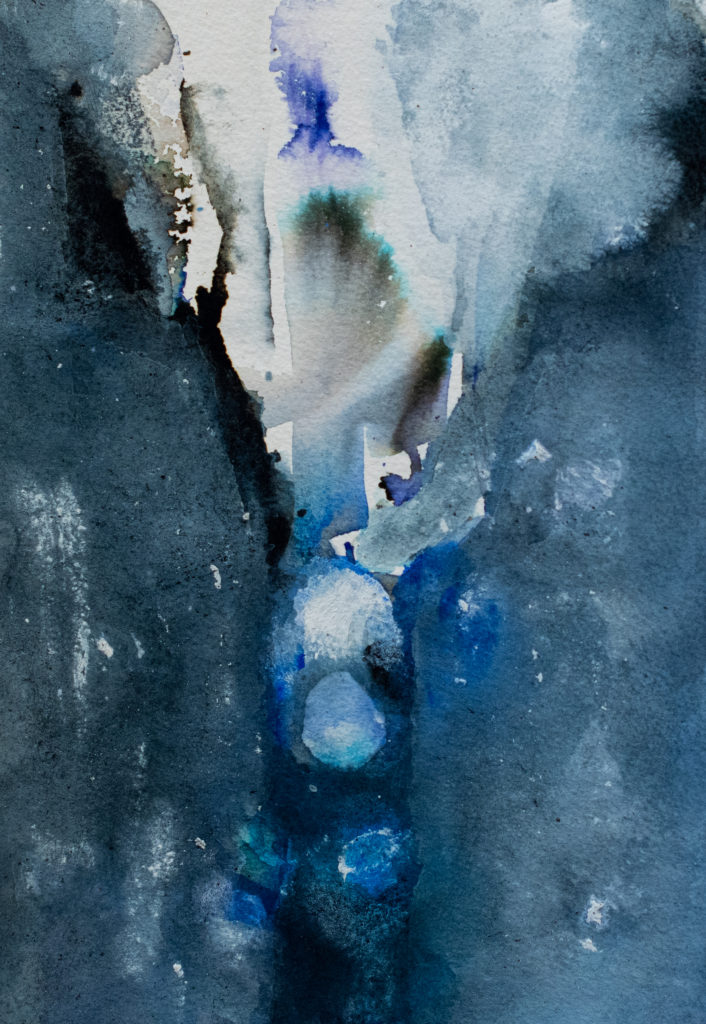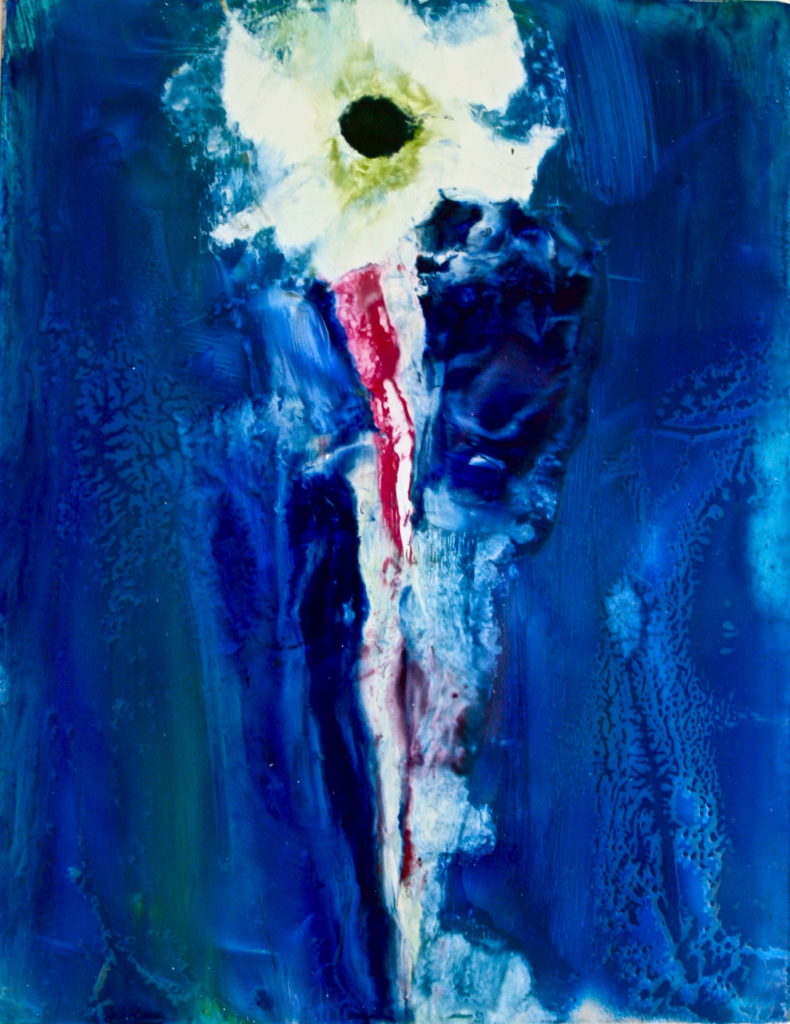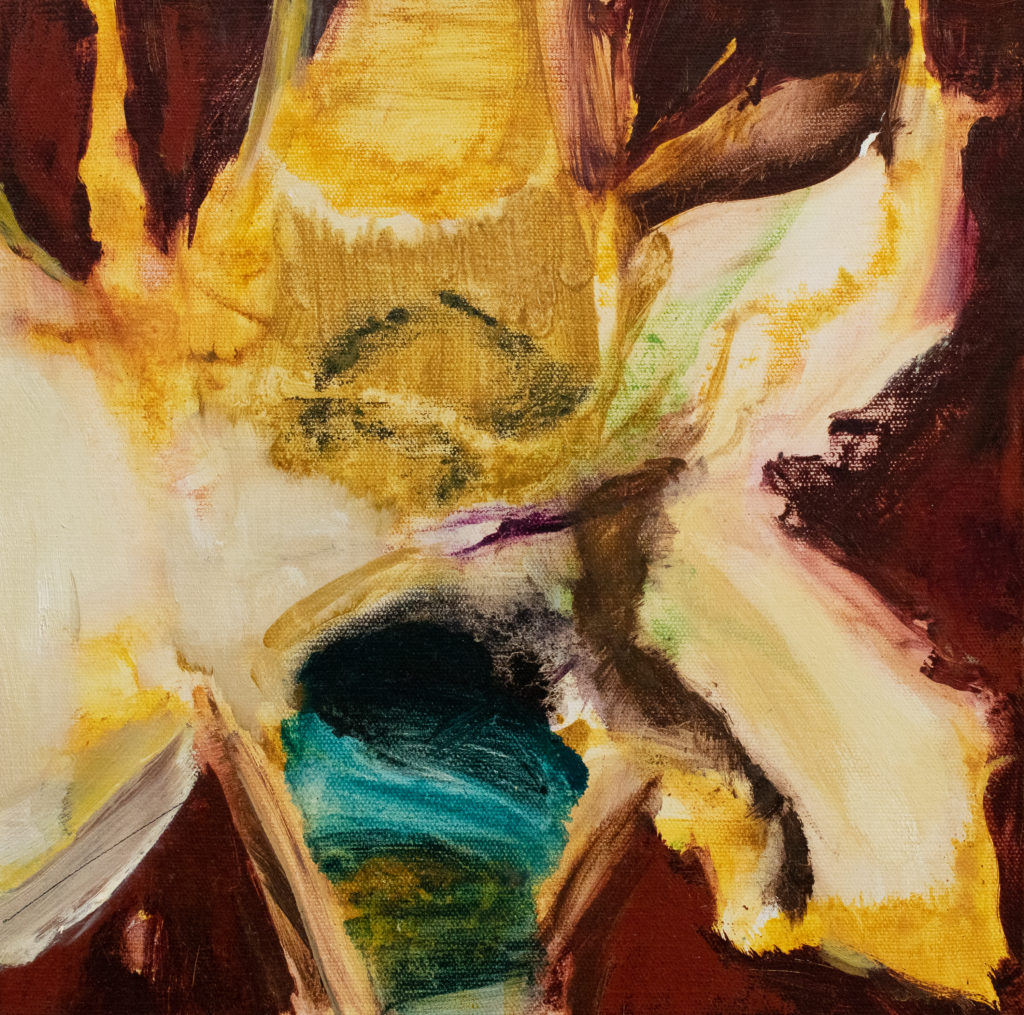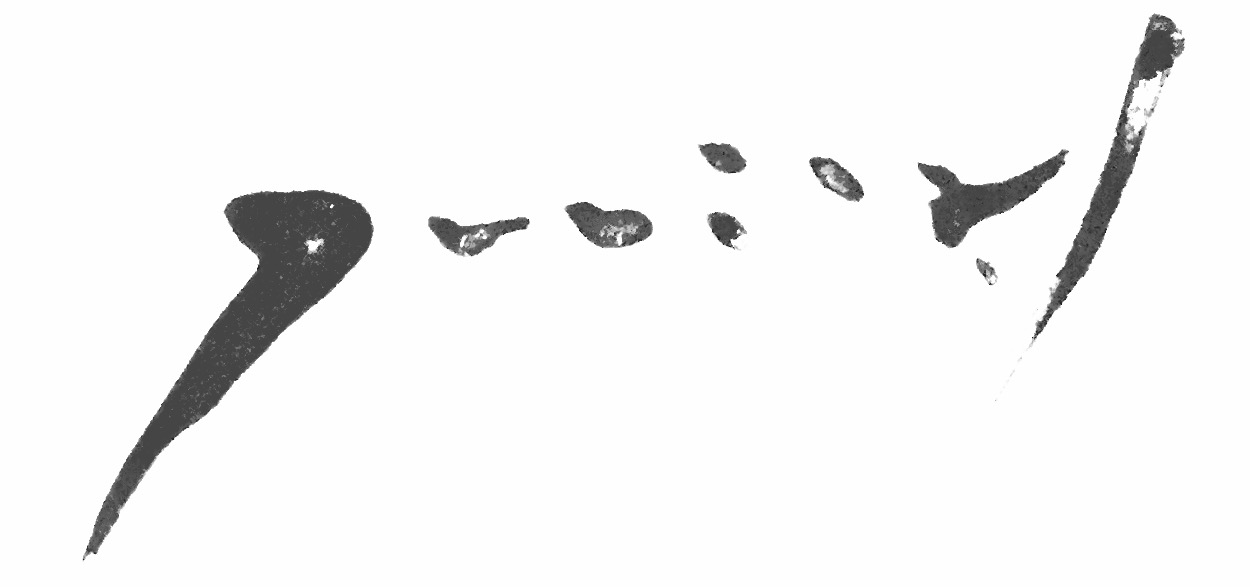画 家
”Image Maker”
Like the meandering pathway of an animal, vivid images take shape as they are mixed on screen.
Although the colours seem beaten down, cut up, and at times violently flying out with a kind of deviance, these images on the brink of collapse are yielded from a continuation of the traditional techniques of oil painting and backed up with the power of great design leaving us with a striking impression.
With both dynamism and apprehension combined – all who see this presentation will be shaken in both heart and mind.



生き物の様にうねる線、画面上で混じり合うかたち。絵の具は生々しく飛び散り、時に逸脱しそうになるが、画家の確かなデッサン力に裏打ちされて崩壊寸前で留まり、鮮烈な印象を残す。力強さと危うさの両方を併せ持つその表現は観る者の心を強く揺さぶる。
For SHIMAMURA Yuriko Exhibition
Critecism:Meiji Hijikata
Director of the Taro Okamoto Museum of Art,kawasaki
Visiting Professor of Musashino Art University
In 2009, Shimamura stayed in Barcelona, Spain, under the Programme of Overseas Study for
Upcoming Artists by the Agency for Cultural Affairs in Japan for a long period. While based in
Barcelona, she travelled around Spain and was especially mesmerised by the climate of
Andalucia. Her essays about the memories of this place are all fascinating – particularly the
part about the sunflower field in Carmona, a small village near Sevilla.
The vast field of sunflowers stretching to the distant horizon. Burning sunshine easily
exceeding 40 degrees. That strong rays of the sun pour relentlessly over the dying sunflowers.
The background is the deep blue sky embracing the darkness.
As the wind blows hard, it sounds like a music blares out.
They are so powerful, that the more you stare, the stronger they stare you back.
Even after withering, they remain to expose its brownish, miserable presence to the blazing
sun, which was blindingly bright and somehow frightening.
Perhaps this is the landscape of another world.
For the first time ever, I thought sunflowers are beautiful.
The vision of the landscape of another world that I saw in the middle of an intense light.
This reminded me of Island of Apollo by Kunio Ogawa. Like Shimamura, Ogawa was born in
Shizuoka. This is his debut novel which is based on his experience of wandering around the
Mediterranean on a motorbike. He also realised in Carmona, the true darkness lies in the
bursting light which pierces your eyes and wipe off shadows. For Ogawa, who is a Christian, a
light is the metaphor for the God. On the other hand, for Shimamura, a light is what awakens
your senses; and this means the root of the life. Still the sight of the light that Shimamura
glimpsed like a daydream shares a commonality with Ogawa’s vision, where holiness and
secularity, this world and another world, and life and death get reversed while acting as both
sides.
A good colour painter would seek lights by constantly sharpening and extending his/ her
senses; then translates the light which he/she receives into colours. The unique colours which
define Shimamura’s works symbolise passion and despair, and eros and Thanatos at the
same time; and there is no doubt that the root of these colours is her obsession with light and
her sharpened senses.
Looking at the materials I received, I can already see a special sense of colours in the works
from her student days. The intense yet deep colours that surpass and overwhelm forms are
common in Expressionism. Every colour conveys the painter’s sharp and violent emotions,
and shakes the viewer’s mind. It seemed that the challenge for the painter was to control and
take advantage of the overflowing colours. This was demonstrated in her later works. Many of
her motifs are plants. The forms of plants are dismantled and reconstructed through repeated
constant gazing and sketches. Through this process, the subject of the painting is absorbed
deeply into the painter’s psyche and resonates with it. Sometimes collapse and harmony
countervail, and can create a dangerous balance. The new forms created in such way are
separated from reality and connected with an unknown form. This unknown form was born out
of the painter’s internal necessity. This is how the strength of colours and forms are linked with
tensions, in which the painting achieves its independence. When the colours and forms are
taken deep into the painter’s psyche, dissolved at a high boiling point and unified, the purity of
the work gets even more enriched. At times, an artwork creates a vision of unreality by
overcoming the reality, and possesses a certain kind of symbolism. Thus the artwork
approaches closer and closer to the vision she aims – “a shining, crystal-clear world where
redundant things are cut off and the strength has been increased.”
The other day I visited Shimamura’s studio for the first time. Her works for the exhibition were
propped up everywhere. She told me she painted a tree “going back to basics” for her new
large work. The motif of the work is the sacred tree at the Shidabi Shrine in Yakumo, Matsue
City, where she visited at the end of last year. It is a few-hundreds-year-old huge chinquapin
tree. Once, Shigeru Mizuki is said to have had a hunch of eight-headed serpent to see this
unusual huge tree. Two new works were still in process. Because the works were incomplete, I
could immediately see the difficulty in putting this giant tree into a painting. The wriggling tree
in the painting directly conveys the pain of birth. The success of the painting depends on how
she can calm down this rampageous tree, keeping it under her control and internalising it. She
encountered this enormous sacred tree in Yakumo – the land where gods dwell, and absorbed
its dignity, presence, and invisible sign with all her five senses. I could see the struggle to
summon what she felt into the painting and make it appear. In a way, a visionary painter is
similar to an evocation of a deity. A sense of urgency which was generated by the intensity of
Shimamura’s visions filled up the cramped studio. I felt an overwhelming sense of tension in
the process of creation, and that I was right at the birthplace of a new work of art. I left the
studio with an anticipation for the completion of the work in a month.
This exhibition is also a memorial exhibition of an award.
Shimamura has become the very first recipient of the 1
st Sicoh Award. The award has been
established by Motoko Hirayama, the director of Sicoh Gallery, with the aim to support young
talented painters. The reason of the award can be summed up in the comment by the jury
Minori Terada, “She draws with the heart, not with the brain”. While many painters tend be
driven by trends, the style of Shimamura’s creation shows her devoted naivete. However, her
works, created by invoking all five senses, carry a powerful inner truth.
